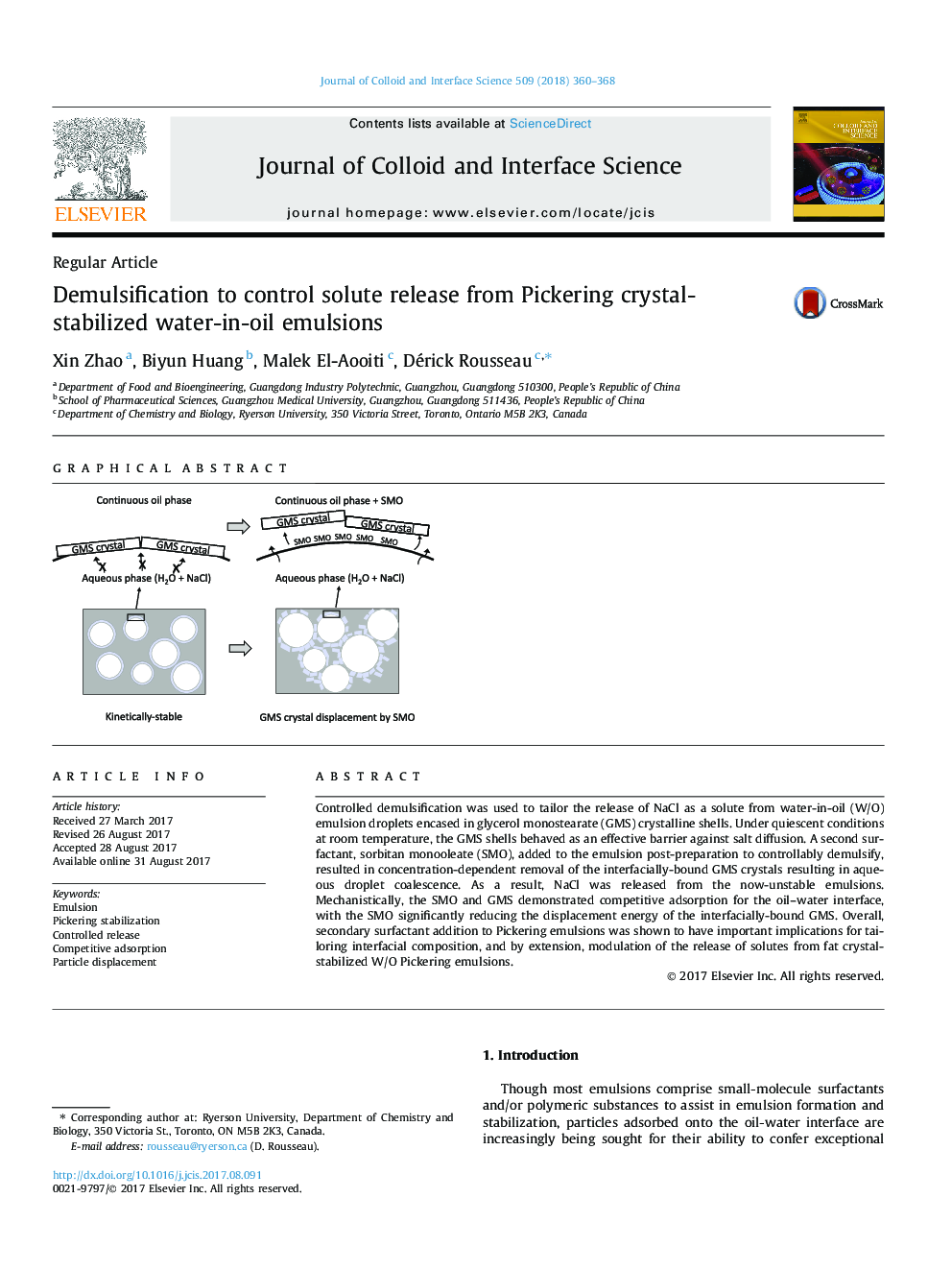| Article ID | Journal | Published Year | Pages | File Type |
|---|---|---|---|---|
| 4984296 | Journal of Colloid and Interface Science | 2018 | 9 Pages |
Controlled demulsification was used to tailor the release of NaCl as a solute from water-in-oil (W/O) emulsion droplets encased in glycerol monostearate (GMS) crystalline shells. Under quiescent conditions at room temperature, the GMS shells behaved as an effective barrier against salt diffusion. A second surfactant, sorbitan monooleate (SMO), added to the emulsion post-preparation to controllably demulsify, resulted in concentration-dependent removal of the interfacially-bound GMS crystals resulting in aqueous droplet coalescence. As a result, NaCl was released from the now-unstable emulsions. Mechanistically, the SMO and GMS demonstrated competitive adsorption for the oil-water interface, with the SMO significantly reducing the displacement energy of the interfacially-bound GMS. Overall, secondary surfactant addition to Pickering emulsions was shown to have important implications for tailoring interfacial composition, and by extension, modulation of the release of solutes from fat crystal-stabilized W/O Pickering emulsions.
Graphical abstractDownload high-res image (141KB)Download full-size image
